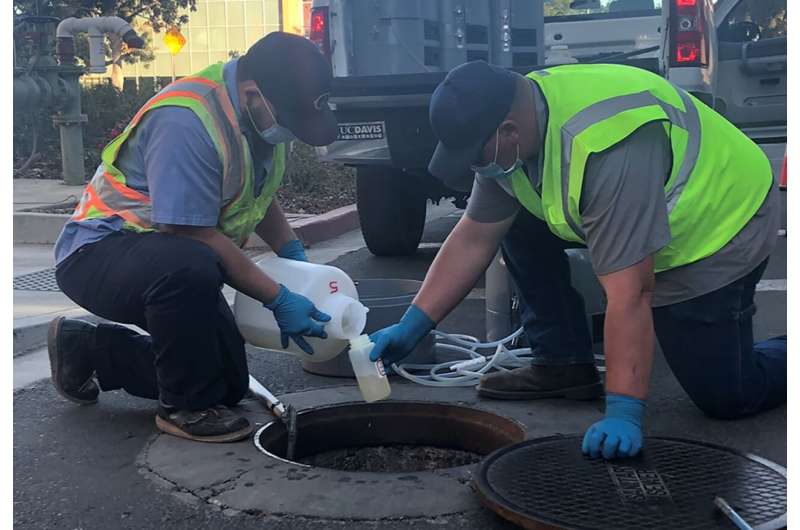Team evaluates advantages and limitations of wastewater monitoring for public health

Since September 2020, University of California, Davis, researchers have been monitoring wastewater on the UC Davis campus and in the city of Davis for COVID-19 through the Healthy Davis Together program. A new article published Feb. 8 in Proceedings of the National Academy of Sciences reviews their experiences and the advantages and limitations of wastewater testing as a public health tool in the COVID-19 pandemic.
Assistant Professor Heather Bischel and doctoral student Hannah Safford, Department of Civil and Environmental Engineering, and Karen Shapiro, associate professor in the School of Veterinary Medicine, manage the city/campus wastewater monitoring program, which now includes collections weekly, triweekly or daily from over 50 sites distributed across the UC Davis campus and city of Davis sewer networks. Their results have supported the return of students to campus and helped officials understand the spread of COVID-19 in the community.
"Continued deployment of wastewater-based epidemiology in ways that take into account the needs of decision makers, and pragmatically weigh costs and benefits, will no doubt do much to help end the pandemic," they wrote.
Advantages and limitations
Because infected people begin excreting virus days before developing symptoms, wastewater monitoring can provide an early warning of infection in the community. The approach is also more cost-effective than large-scale individual clinical testing when it comes to gathering data on disease levels in a region.
But as Safford, Shapiro and Bischel explained, wastewater monitoring also has limitations. It is less effective as an early-warning system when community transmission is high. And while relatively inexpensive, wastewater monitoring is not cost-free. It requires specialized equipment such as autosamplers, as well as staff to collect, process and analyze samples. Investing in wastewater monitoring can also divert time and resources from other efforts.
Finally, deciding how to act on wastewater data can be challenging, as the results do not show who may be infected: They can only point to a neighborhood or a building complex (such as a university dorm) of possible concern. In Davis, Healthy Davis Together has used wastewater data to strategically target email, text alerts and incentives encouraging Davis residents to get tested when local virus levels are on the rise.
The PNAS piece includes a series of recommendations for using wastewater monitoring in COVID-19 response. These include avoiding redundancy with clinical testing, thoughtful design of sampling and data-analysis plans, defining action thresholds, monitoring fewer sites but more frequently, building on existing infrastructure and being prepared to adapt and communicate with other practitioners, epidemiologists and public health officials.
More information: Hannah R. Safford et al, Opinion: Wastewater analysis can be a powerful public health tool—if it's done sensibly, Proceedings of the National Academy of Sciences (2022). DOI: 10.1073/pnas.2119600119



















